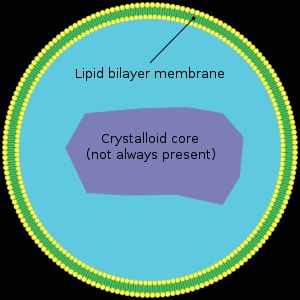Small, everywhere and crucial for cell vitality
Peroxisomes are small cellular compartments (membrane-enclosed “rooms”, or organelles) that occur in almost all cells – from a simple baker`s yeast cell to crop plants and humans. Peroxisomes are essential for cell vitality. For instance, people born with inherited peroxisome defects generally die rather early. Oily seeds of crop plants with damaged peroxisomes can no longer germinate and are inefficient in photosynthesis. Furthermore, trypanosomes, single-cell blood parasites causing sleeping sickness, depend on specialized peroxisomes (glycosomes) to feed on blood glucose.
Peroxisomes were discovered about 60 years ago and initially called “microbodies” because of their small size (≤1 µm in diameter), which is in the range of bacteria. The small size and fragility of peroxisomes pose significant technical challenges in research laboratories. Therefore, research on peroxisomes has long been neglected compared to other cell organelles such as the nucleus, mitochondria or chloroplasts. Despite being small, peroxisomes are extremely important. All organisms are made of cells, and nearly all cells have and need peroxisomes, from fungi involved in drug production and food processing to cereals, biofuel plants, parasites, animals, and humans.
Peroxisomes take center stage

It is becoming more and more evident that peroxisomes play a central role in cellular lipid and energy metabolism. New unexpected roles of peroxisomes are uncovered year by year. Importantly, since in all organisms studied peroxisomes are essential for breakdown of hydrogen peroxide, known to be a major cellular stressor and signalling molecule, it is now clear that peroxisomes also fulfil crucial non-metabolic roles (e.g., in stress response, defense against pathogens, cellular signalling and ageing), indicating that their significance in human health goes far beyond the relatively rare inherited peroxisomal disorders.
Peroxisomes – cellular team players
From their diversity of functions, it is clear that peroxisomes cannot function in isolation but rather must communicate and interact extensively with their environment to exchange metabolites and coordinate cellular responses. Membrane contact sites, where membranes of two organelles are physically tethered to enable rapid transfer of small molecules, enable organelle communication and are crucial for coordination of cellular functions and hence human health. Often, at these contact sites there is an accumulation of transport proteins that enable rapid and regulated metabolite exchange. Research on contact sites is a challenging, upcoming field in current cell biology. It is becoming evident that membrane contacts are central to cell physiology. Moreover, alterations of membrane contacts have been observed in various diseases. The diverse functions of peroxisomes require dynamic interactions and cooperation with many organelles involved in cellular lipid metabolism such as the endoplasmic reticulum (ER), mitochondria, lipid droplets, and lysosomes. An important and challenging question in modern cell biology is now to characterize the components and functions of membrane contact sites between organelles, to understand how they are regulated, and what physiological roles they play in human health and disease.
Thinking ahead: How to solve challenges of the 21 century?
We are all aware that our world is facing major challenges in this century that nobody knows to solve yet. For instance, numerous metabolic diseases need to be treated by smart strategies, and new drugs must be developed against human pathogens. Likewise, we are facing an ageing population with an increase in age-related disorders including neurodegeneration, diabetes, and cancer. This seems nearly impossible.
Peroxisomes significantly contribute to cell vitality and fitness of organisms. Understanding how peroxisomes are integrated into the interaction and communication network of subcellular organelles will help to develop novel leads for drug discovery and therapies for a growing list of serious human diseases in which peroxisomes have been implicated. Examples include age-related disorders, metabolic disorders (including severe malnutrition and obesity), and pathogenic trypanosomal infections (e.g. sleeping sickness), where glycosomal contact sites are attractive novel targets for drug design.
PerICo: Training the next generation of scientists
In 2018, the EU funded the Marie Curie Initial Training Network PerICo, which stands for “Peroxisome Interactions and Communication”. This large project, led by Prof. Dr. Ida van der Klei (University of Groningen, The Netherlands), received a budget of 4 Mio € to study peroxisome-organelle contacts and communication intensively. PerICo brings together eight world-leading academic institutions with strong track records in the field of peroxisome biology and two companies, which are key players in bioinformatics and the development of highly advanced fluorescence microscopy systems. These are complemented by five partner organisations with expertise in metabolomics, drug screening, high-resolution respirometry, hepatology, gastroenterology, nutrition, and research and science communication. This composition documents the high level of integration of distinct fields of technology and expertise required for training of fellows sufficiently skilled to bring innovations to applications in modern molecular life sciences. Skype meetings are held nearly every day, and the PhD students frequently travel to workshops, conferences and partner laboratories for mutual learning and to pull down historical walls that have separated traditional research areas for decades.
The programme provides state-of-the-art research training for 15 PhD students at the interface of medicine, fungal and host-parasite biology. Marie Curie Initial Training Networks are highly prestigious awards funded by the European Union’s Horizon 2020 Programme, focused on the training of the next generation of European leaders in science to solve interdisciplinary questions of global concern and to increase the European competitiveness in research and development.
The fundamental, discovery-based and technological advances in peroxisome-organelle interaction and cooperation will contribute to the development of new technologies for research in molecular life sciences, new strategies for medical applications, and significant progress in academia, medicine and industry. Likely not tomorrow and not next year, but in the critical decades to come.
1,954 total views, 1 views today
